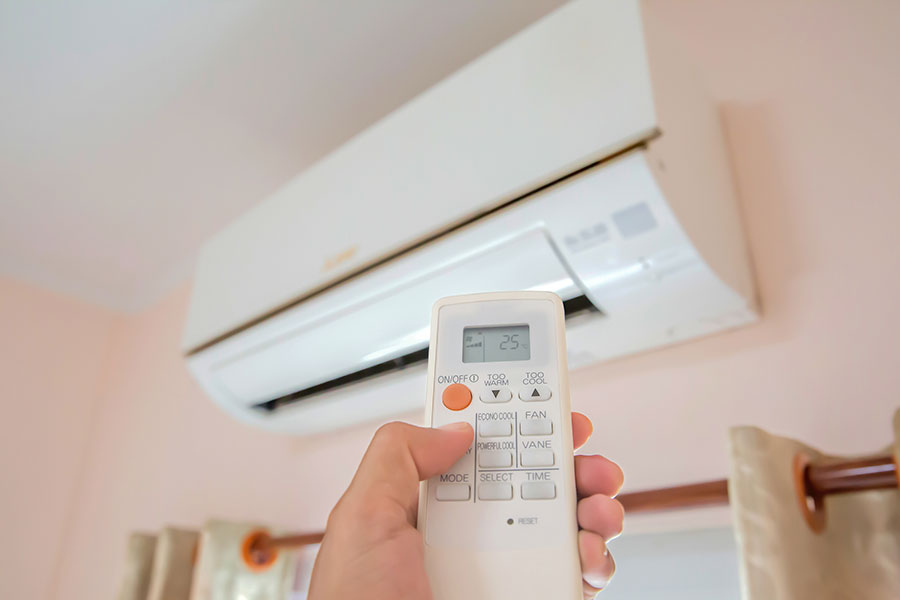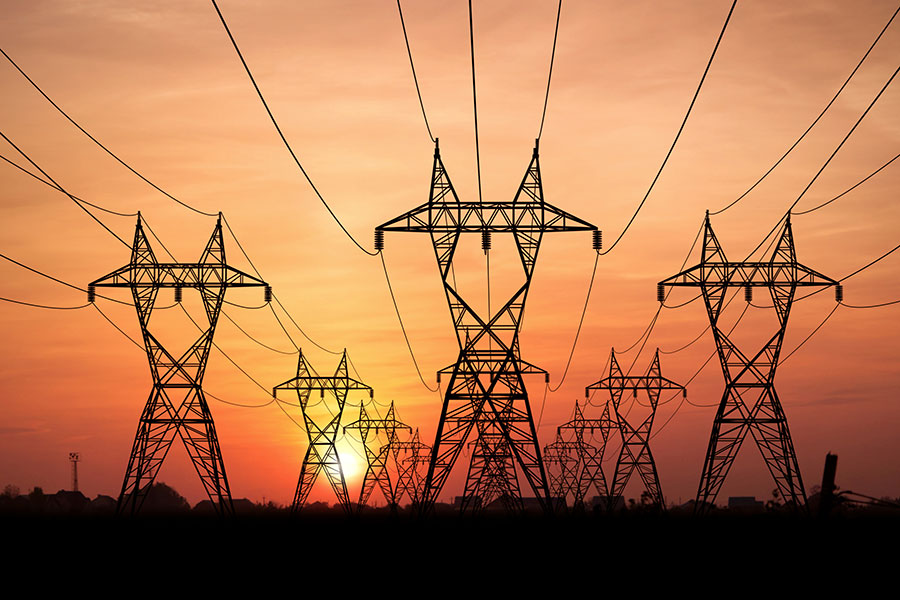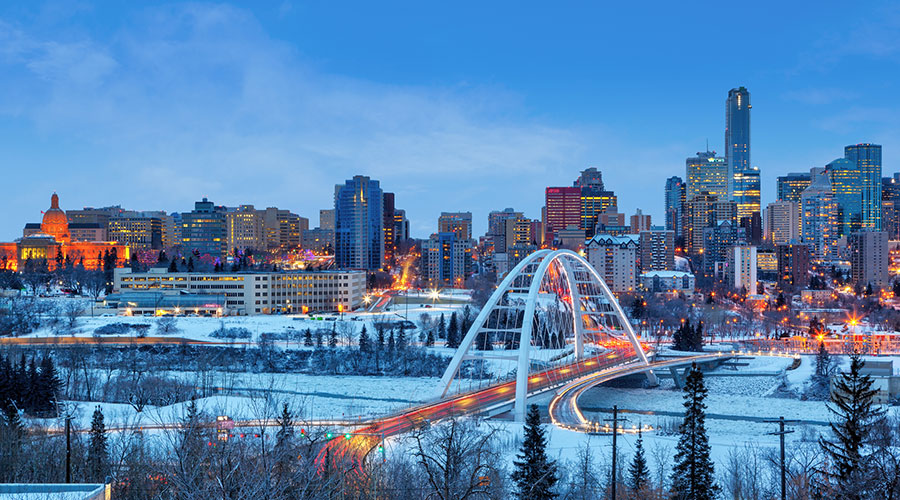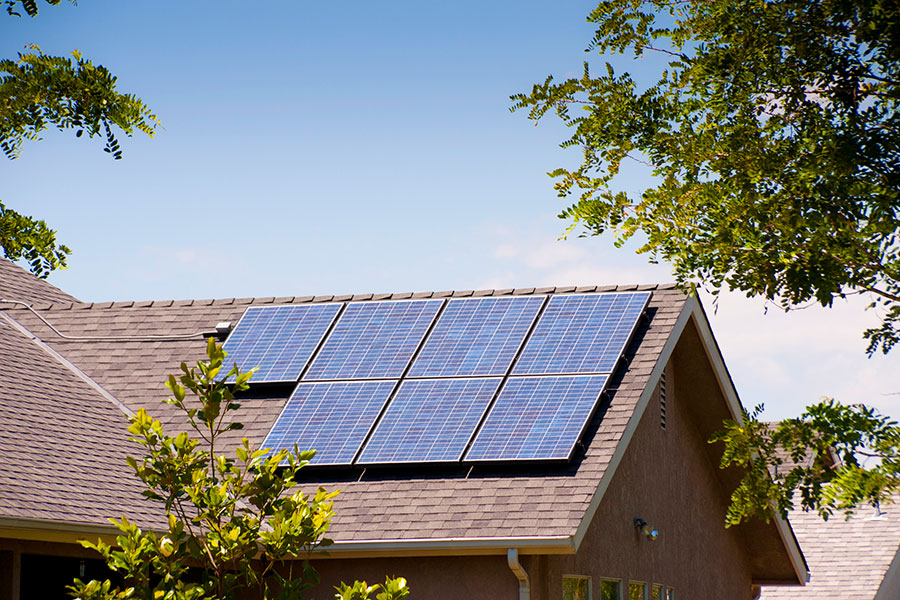A “fantastic technology” that may need a little help on the Prairies
Air conditioners have been one of the summer of 2021’s hottest home renovation requests, thanks largely to temperatures in Western Canada that reached what CTV Edmonton chief meteorologist Josh Classen (Radio and Television ’96) called “historic” heights.
The recent shortage of units no doubt struck many sweaty customers as completely uncool.
It may also have led them to explore alternatives other than kiddie pools and cold drinks. The Government of Canada would like energy-efficient heat pumps to top the list of long-term cooling solutions – and to see us use them for heating as well. To that end, it has made them eligible for rebates in its Canada Greener Homes Grant program.
When it comes to air conditioning, there’s no question that heat pumps are the greener, low-carbon option. But when recommended for double duty, to replace conventional heating systems as well, some parts of Canada might stop them cold. Do they have a place on the Prairies and Northern Canada, where the thought of a broken-down furnace is a midwinter nightmare?
We asked Adam Budde (Sheet Metal Worker ’09, Refrigeration and Air Conditioning Mechanic ’15) − a project estimator with Edmonton-based HVAC specialists, Vets Group − to help clear the air on this hot topic.
How heat pumps work

Heat pumps cool or heat as required, using an inside and an outside unit. “In cooling mode, it takes heat from the indoor air and transfers it to the outdoor unit,” explains Budde. “In heating mode, it reverses and takes heat from the outdoor air and transfers it inside.”
Air temperatures change the physical phase of a refrigerant in the units (from vapour to liquid or vice versa), which releases or consumes energy. That energy gain or loss then changes the temperature of a medium that travels through pipes to warm or cool a space.
What they cost
Compared to a conventional air conditioner, you can expect to pay two to three times more for installation, says Budde. You’ll save the cost of natural gas, which heat pumps don’t use, but you’ll be watching the price of electricity instead, which tends to be the more expensive option in Alberta.
Why heat pumps use less electricity than an air conditioner

Air conditioners use a lot of power. In fact, because of climate change, some researchers link the need for expanded electrical grids in the U.S. directly to the need for cooling.
For heat pumps, the relative efficiency comes from something called capacity control, says Budde. An air conditioner or furnace is told by a thermostat to turn either on or off − an all-or-nothing binary. A heat pump, in contrast, runs on a gradient, ramping up its energy requirements incrementally, just enough to meet demand.
“They only work as hard as they need to,” says Budde, “so they use less energy when the demand is lower.”
How they perform in Alberta

Heat pumps will cool a space as well as an air conditioner. The farther north you go, however, and the more consecutive days below -20 C that can bring, may test their ability to comfortably heat a home.
Heat can be pulled from -20 C air, Budde explains, but getting enough means running more air through the heat pump. What’s more, he adds, cold air is denser, working the machine harder. At best, the pump uses more energy, becoming less efficient. At worst, it struggles to keep up.
Hybrid models that combine a heat pump with natural gas-powered heating technology are available, Budde points out. Otherwise, he admits that his service background biases him toward coupling a heat pump with a backup gas-powered furnace − “to be safe.”
How they improve your carbon footprint

When considering the environmental impact of heat pumps in Alberta, Budde looks at what he calls a “personal carbon footprint.”
On location, they will help decrease the energy demands of cooling. But Budde points out that an indirect link to greenhouse gas emission remains in most places in the province, as 91% of Alberta’s power is generated by burning fossil fuels. Given our current infrastructure, it will take a great many footprints to be able to march toward sustainability while enjoying the luxury of cool homes during our hottest summer days.
Of course, the pace of that march could quicken. Plans are in place to increase wind and solar input into the province's electrical grid, and to convert the majority of production to cleaner-burning natural gas. What's more, the upward trajectory of Canada's carbon tax on CO2-emitting fuels could position the technology as a cost-cutting measaure.
While we wait on that evolution, Budde still considers the possibility of heat pumps being part of a healthy mix of energy-saving measures at home today, even in a city as chilly as Edmonton can be. While it may not rank among Canada’s warmest cities, it is one of its sunniest, averaging 325 bright days a year.
“Heat pumps are a fantastic technology,” he says. “If you go full solar on your house and you can power your own, to me that’s a no brainer.”
Banner image brazzo/istockphoto.com